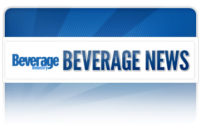Mass merchandise channel declines due to store size changes
Store sizes evolve to market to rural and urban consumers

Between 2010 and 2012, the mass merchandisers channel declined nearly 3 percent, according to data from Euromonitor International, Chicago. However, the decline can be attributed to evolutions within the channel, such as an increasing focus on grocery and urban sprawl, which is transforming many traditional mass merchandisers into other store formats.

|
For instance, Bentonville, Ark.-based Wal-Mart Stores Inc. has converted many of its stores from mass merchandisers to hypermarkets — a supercenter that combines a supermarket and department store — by adding more space for groceries, says David McGoldrick, research associate with Euromonitor.
However, mass merchandisers also are shifting their focus to smaller-sized versions of their stores, which don’t fit into the mass merchandiser channel, he adds.
“There’s a lot of polarization going on,” McGoldrick says. “At the same time as they’re increasing their number of hypermarkets and making stores bigger, there’s also a focus on smaller stores that are either to be put in urban locations or that can [accommodate] smaller towns that don’t quite get the traffic that a larger store would demand.”
Shopko Stores Operating Co. LLC, Green Bay, Wis., for example, recently merged with Pamida, Omaha, Neb., and rebranded most of the stores as Shopko Hometown. The stores are smaller than a standard mass merchandiser and are located primarily in rural towns, says Jared Koerten, senior analyst with Euromonitor.
“They are aimed at preventing people from having to drive to the next big town in order to shop at a Target or a Walmart,” he explains. “They’re really targeting with these smaller-format stores these underserved rural locations.”
On the other hand, Minneapolis-based Target Corp. has created smaller-scale CityTarget stores that cater to the underserved urban crowd, Koerten says.
Similarly, Wal-Mart Stores Inc. has scaled down its stores by developing Walmart Neighborhood Markets, Walmart Express and, more recently, Walmart On Campus.
“[Walmart On Campus stores] are basically a combination of convenience stores and drug stores, so slightly larger than convenience stores, and [they] have a pharmacy, but they also sell a small range of grocery products,” McGoldrick explains. Located on select college campuses, the stores offer bulk-size drinks, such as 24-packs of bottled water and 12-packs of sports drinks, which are slightly larger packaging sizes than convenience stores typically carry, he adds.
One-stop shopping
Despite having fewer stores in the market, mass merchandisers have grown their share of beverages in the last few years, Euromonitor’s Koerten notes. Within the channel, the two most-popular beverage categories are bottled water and carbonated soft drinks, McGoldrick adds. These categories also top the beverage charts within hypermarkets and club stores, he says. They are particularly popular in large retailers because of their availability in bulk quantities, and shoppers often stock up on groceries at these large-format stores, he explains. This plays into consumer desires for both convenience and value.
Offering food and beverages in addition to non-grocery items also enables one-stop shopping for consumers, which can boost a store’s number of purchases, McGoldrick notes.
In the five years leading up to 2013 when consumer sentiment was low, consumers shifted their spending to consumables, such as food and beverages, according to IBISWorld’s June 2013 report “Warehouse Clubs & Supercenters in the US.” This year, the consumables segment is projected to be the largest part of the club store and supercenter channels, accounting for 47 percent of total revenue, it adds.
Private-label products also have become more popular in the club store channel within the last five years, according to the report. For instance, Costco Wholesale Corp., Issaquah, Wash., is the only retailer that has a partnership with Green Mountain Coffee Roasters Inc. to make private-label K-Cups for the Keurig single-cup brewing system, Euromonitor’s McGoldrick notes.
Although traditional mass merchandisers aren’t projected to perform well because of their conversions into other channels, the hypermarket, or supercenter, channel is expected to continue performing well moving forward, he says.
Supercenters and club stores are two of the fastest-growing retail channels, growing 4.5 percent between 2008 and 2013, according to IBISWorld’s report. This year, revenue in the channels is projected to rise 6.7 percent due to rising consumer disposable income, it adds. Their ability to offer low-priced merchandise is the primary driver of their success; however, retailers’ move toward smaller stores will offer some competition, the report notes.
Looking for a reprint of this article?
From high-res PDFs to custom plaques, order your copy today!




